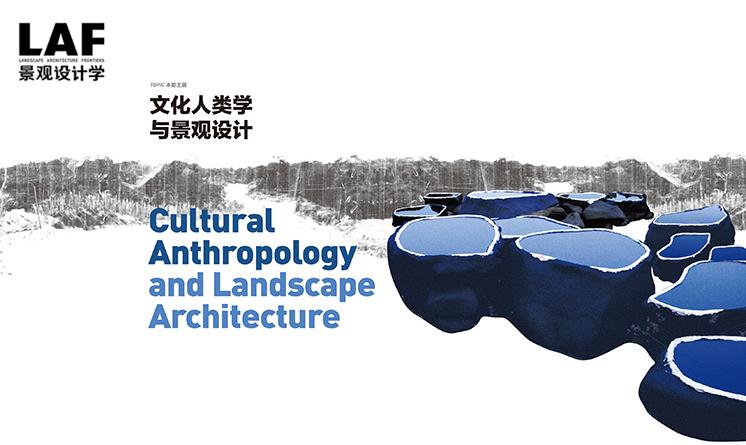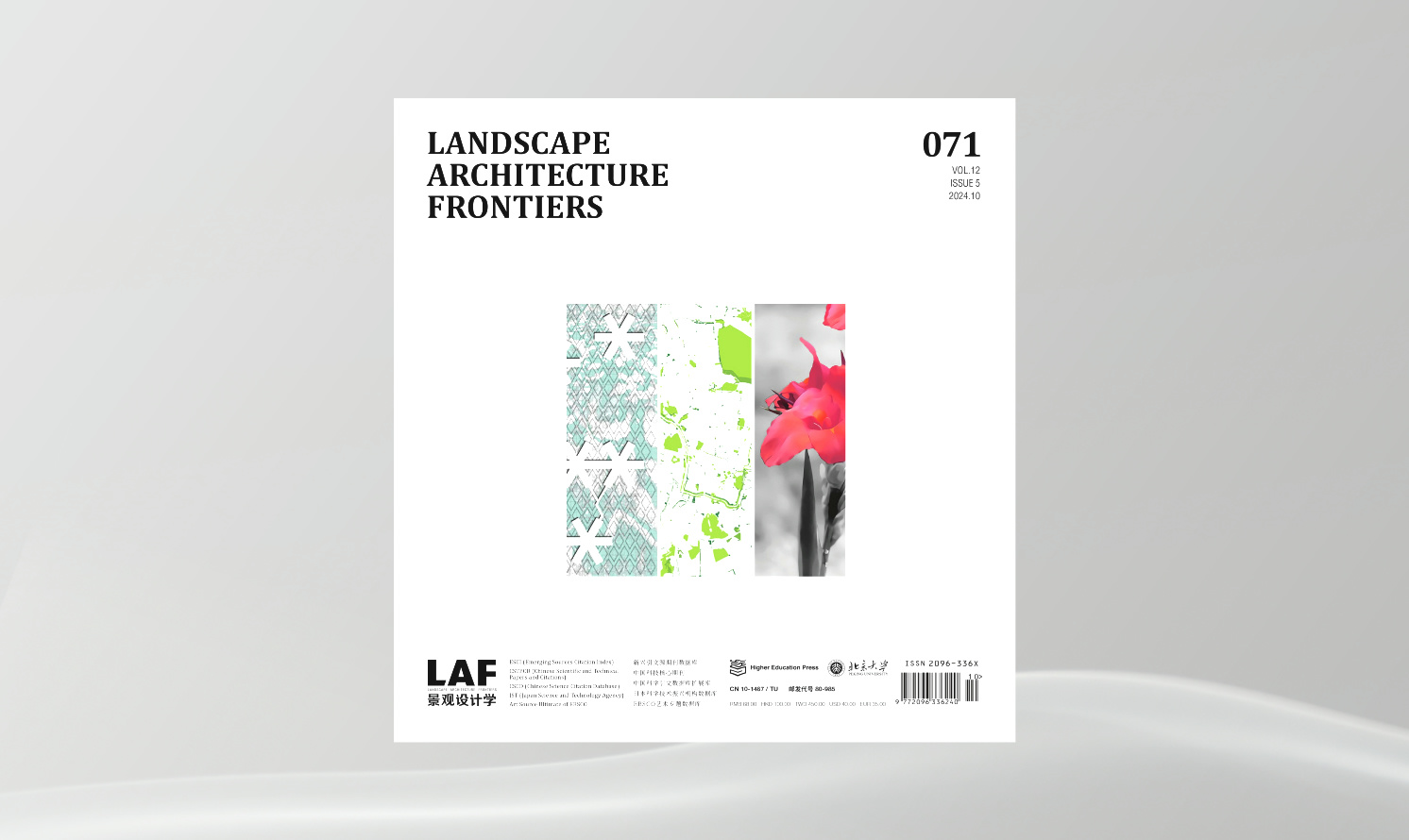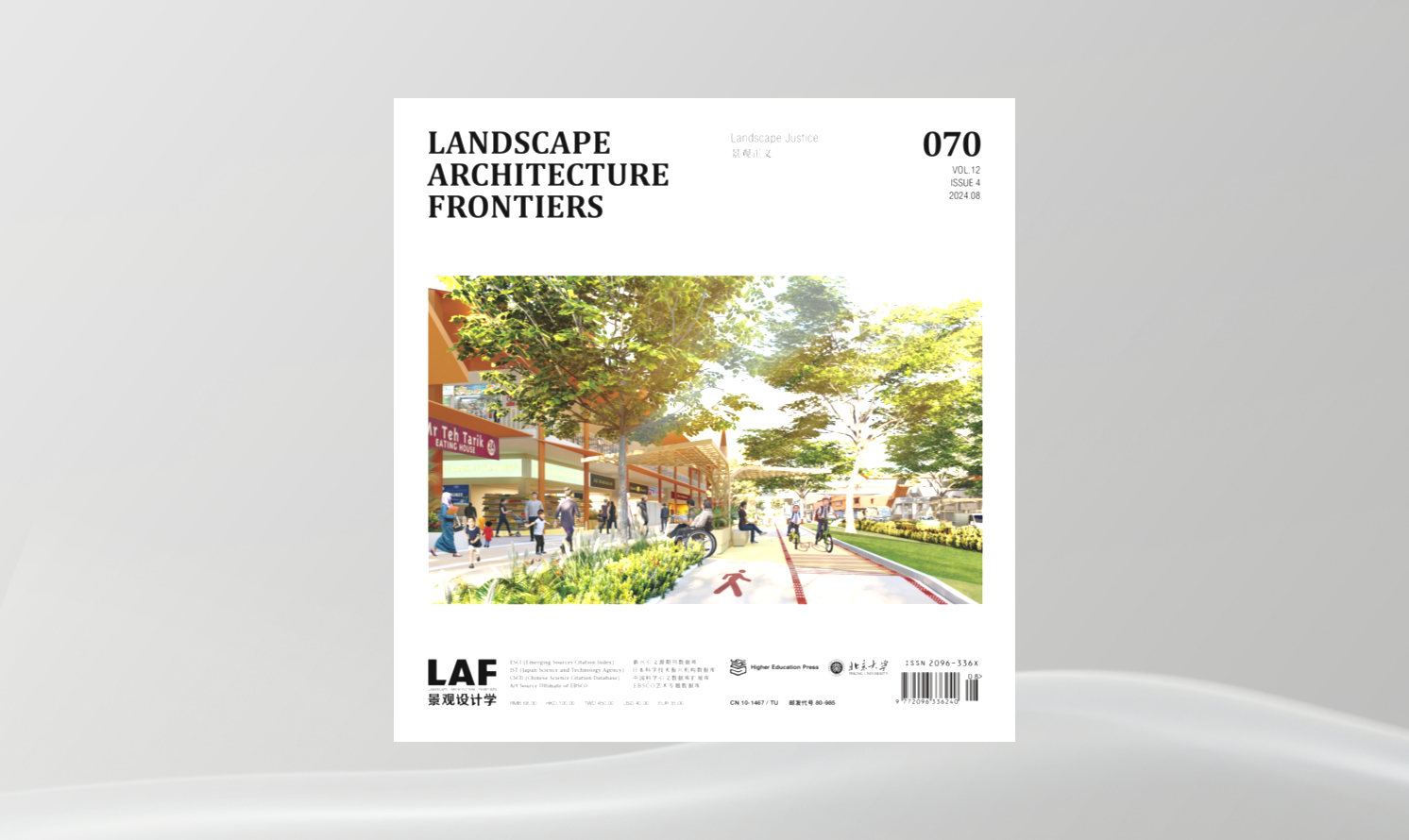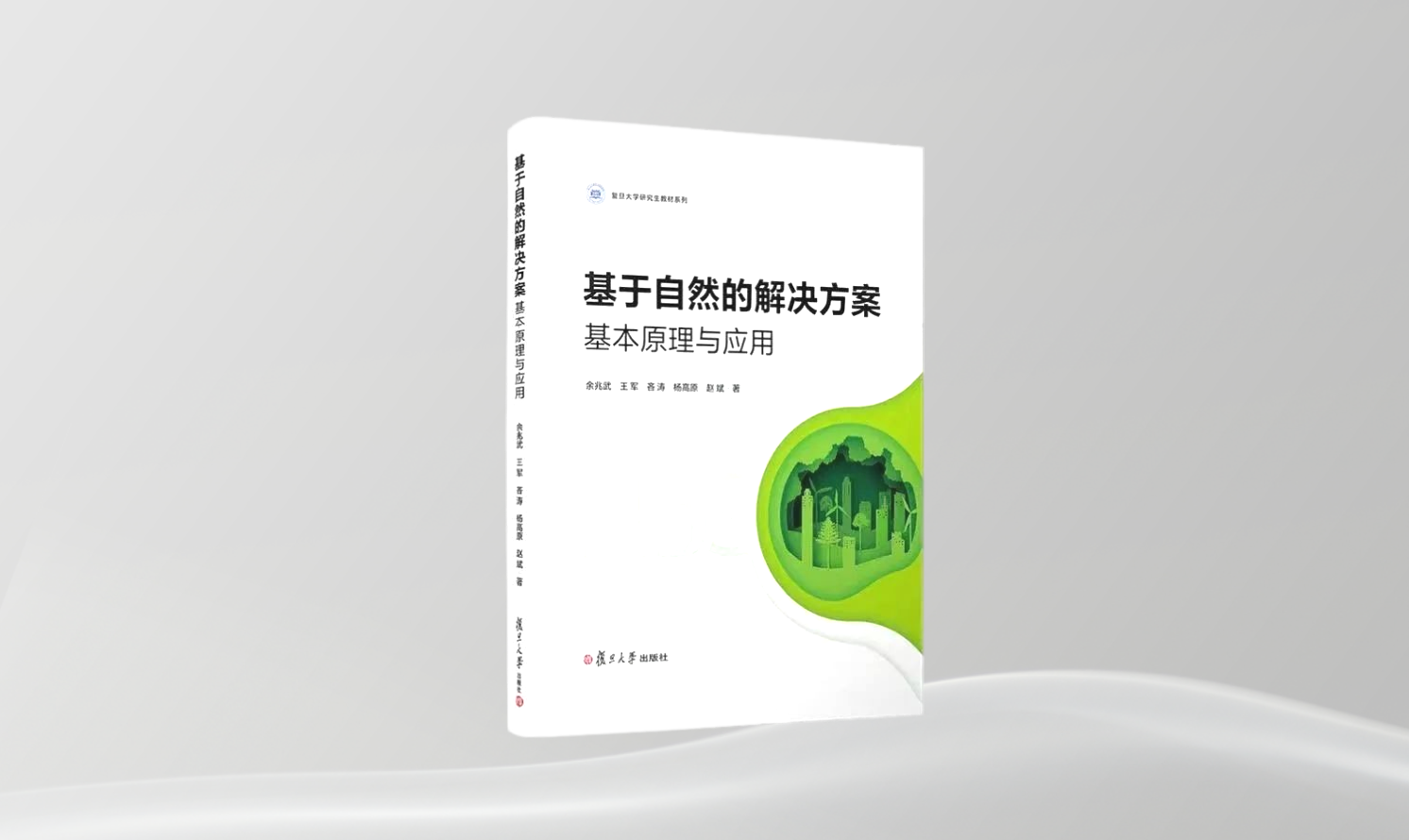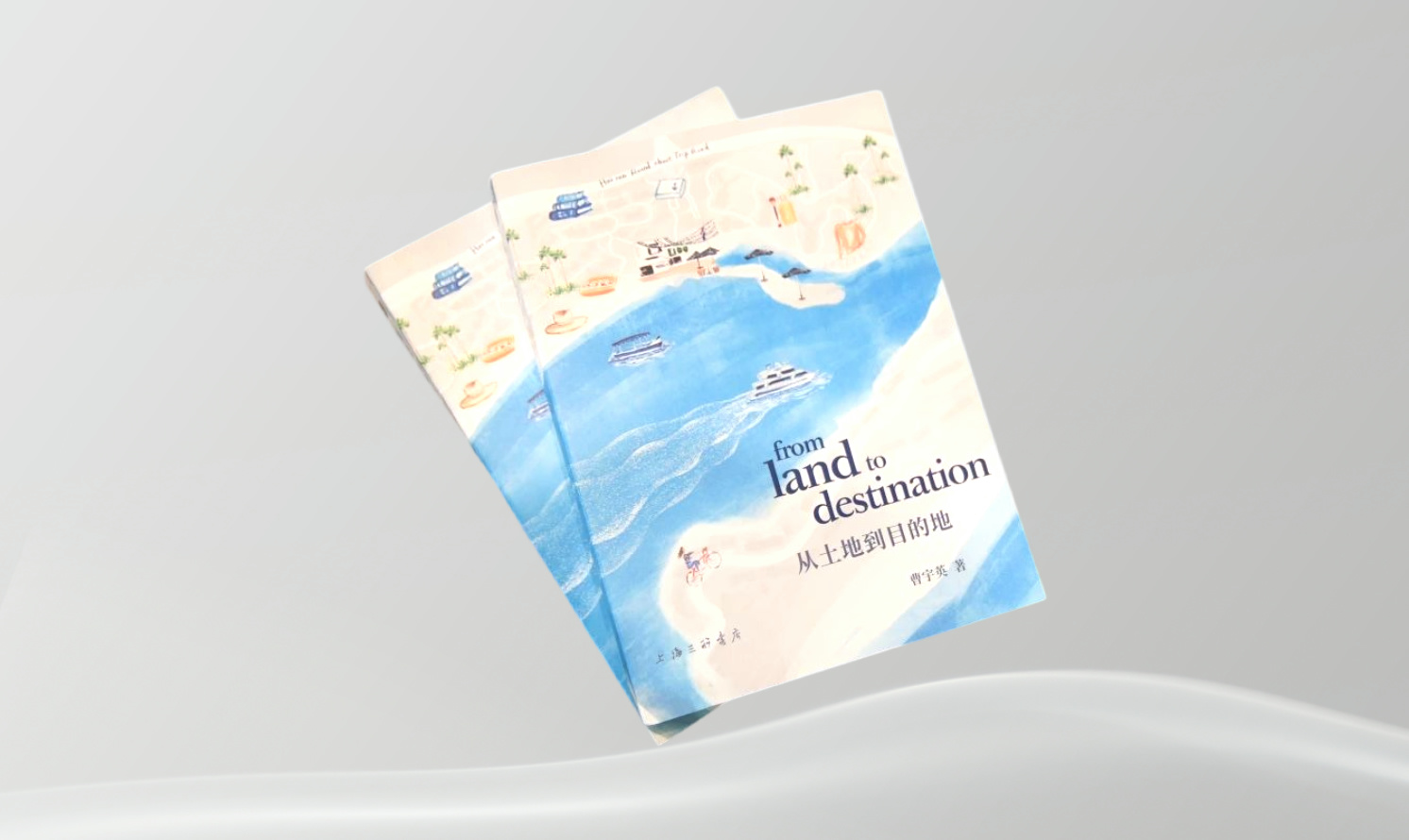場(chǎng)所與空間:景觀人類學(xué)研究概覽
Place and Space:A Review of Landscape Anthropology Research
作者:陳昭(Zhao CHEN)
摘要
景觀人類學(xué)是20世紀(jì)90年代在歐美出現(xiàn)的新的學(xué)科分支��。筆者將從三個(gè)方面來展開“文化人類學(xué)與景觀設(shè)計(jì)”話題����。首先對(duì)“‘文化人類學(xué)’是什么”做出簡(jiǎn)要介紹,為不同學(xué)科背景的讀者提供一個(gè)基本的學(xué)科印象����。其次,對(duì)本文中的“景觀設(shè)計(jì)”一詞�����,做出必要的限定和澄清����,確保形成討論的基本共識(shí)��。接著���,重點(diǎn)介紹文化人類學(xué)基于“景觀”的研究的基本視角——“場(chǎng)所”與“空間”?�!皥?chǎng)所”視角重點(diǎn)關(guān)注“當(dāng)?shù)厝恕辟x予其所處環(huán)境以文化意義的過程��,以及人們的生活實(shí)踐如何構(gòu)建景觀��?����!翱臻g”視角關(guān)注學(xué)者����、企業(yè)家、規(guī)劃師等文化表象的主體如何表達(dá)地方文化���,這種文化表象又如何影響空間的生產(chǎn)��。本文重點(diǎn)梳理了以上兩個(gè)視角的研究��,并介紹了最新的研究動(dòng)態(tài)��,最后落腳“景觀設(shè)計(jì)”的文化內(nèi)涵�����,展望未來文化人類學(xué)與景觀設(shè)計(jì)結(jié)合之可能���。
關(guān)鍵詞
景觀人類學(xué)��;空間��;場(chǎng)所;表象
Abstract
Landscape Anthropology is a new disciplinary branch of Anthropology emerged in European and American academia during the 1990s. The current review develops the topic of“Cultural Anthropology and Landscape Architecture”from three perspectives. Firstly, it provides a brief introduction to the definition of Cultural Anthropology to familiarize interdisciplinary readers. Secondly, it provides necessary conceptual clarification to the term “景觀設(shè)計(jì) (Landscape Architecture).” Thirdly, it provides a review of the research approaches to the study of landscape in the field of Cultural Anthropology: place and space.The “place” perspective focuses on how local people endow cultural meanings onto their surrounding environment, and how people’s routine activities construct landscape. The “space” perspective considers how academics, entrepreneurs, designers, and other main actors in cultural representation, express local culture, and how such representation influences the social production of space. The current paper emphasizes research on these two points and reviews recent studies. Finally, it looks ahead to the possible cooperation between the study of Cultural Anthropology and Landscape Architecture.
Key words
Landscape Anthropology; Space; Place; Representation
定義地方本土性
Defining Local Identity
作者:邵鈺涵����,埃卡特?蘭格�,凱文?斯韋茨,劉濱誼 (Yuhan SHAO, Eckart LANGE, Kevin THWAITES, Binyi LIU)
摘要
本文的研究目的在于提出一個(gè)關(guān)于地方本土性的正式定義����,以厘清景觀研究領(lǐng)域中的這一概念。本文首先介紹了景觀研究中不同層面的特性,隨后通過回溯與之相關(guān)的概念���,梳理其相互關(guān)系與共同點(diǎn)���,從而消除對(duì)于地方本土性內(nèi)涵的混淆。本文的第三部分對(duì)這些概念的共同點(diǎn)予以了提取�����、歸納和重組�,從而形成了一個(gè)新框架,以呈現(xiàn)可促進(jìn)形成地方本土性的元素�����,并提出了對(duì)于地方本土性的正式定義�����。文本亦總結(jié)了就這一正式定義與框架對(duì)于景觀研究與實(shí)踐的意義�����。
關(guān)鍵詞
地方本土性�����;景觀特性;場(chǎng)所感知
Abstract
This study aims at providing a formal definition on local identity to clarify the confusion in the field of landscape study. The study first introduces different levels of identities in landscape research. Then the second part reviews relevant definitions to identify their relations and common factors to clear confusions on local identity. The third extracts, formalizes and reorganizes the common factors into a new framework to represent elements that contribute to local identity and form a formal definition of local identity. The paper also concludes their important meanings to both landscape research and practice.
Key words
Local Identity; Landscape Identity; Sense of Place
沙盒——基于計(jì)算機(jī)輔助建造和增強(qiáng)現(xiàn)實(shí)技術(shù)的風(fēng)景園林規(guī)劃設(shè)計(jì)操作平臺(tái)
Sandbox — An Operation Platform for Landscape Architecture Planning and Design Based on Computer Aided Manufacturing and Augmented Reality Technology
作者:馮瀟�,蔡凌豪,王文韜Xiao FENG, Linghao CAI, Wentao WANG
摘要
在規(guī)劃設(shè)計(jì)過程中�����,用以表達(dá)基地原始信息�����、承載規(guī)劃設(shè)計(jì)行為的操作界面�����,就是規(guī)劃設(shè)計(jì)操作平臺(tái)��。隨著數(shù)字化技術(shù)的進(jìn)步��,一種基于計(jì)算機(jī)輔助建造技術(shù)(CAM)和增強(qiáng)現(xiàn)實(shí)技術(shù)(AR)的操作平臺(tái)逐漸發(fā)展起來���,這就是“沙盒”。本文闡述了“沙盒”平臺(tái)的技術(shù)背景����,簡(jiǎn)要回顧了平臺(tái)的發(fā)展歷程���。作者以北京林業(yè)大學(xué)風(fēng)景園林規(guī)劃設(shè)計(jì)研究院數(shù)字景觀研究中心制作的沙盒為例,介紹了“沙盒”平臺(tái)的架構(gòu)�,并著重展示了其數(shù)字信息分析模塊的功能及運(yùn)作原理?��!吧澈小笔且环N能夠精確還原現(xiàn)場(chǎng)����、直觀承載手工設(shè)計(jì)操作�����,并進(jìn)行實(shí)時(shí)人機(jī)互動(dòng)的四維操作平臺(tái)����。
關(guān)鍵詞
規(guī)劃設(shè)計(jì);操作平臺(tái)��;沙盒��;計(jì)算機(jī)輔助建造����;增強(qiáng)現(xiàn)實(shí)
Abstract
A planning and design operating platform is an operational interface which is used in the process of planning and design to demonstrate the base information of an existing site, and to facilitate planning and design activities. With the improvement of digital technology, an operating platform called Sandbox has been developed, based on Computer Aided Manufacturing and Augmented Reality technology. This paper introduces the technical background of the Sandbox platform, and briefly reviews its development. The author takes the sandbox produced by Digital Landscape Research Center of the Landscape Architecture Planning and Design Institute of Beijing Forestry University as an example, to explain the framework of the Sandbox platform, and to emphatically show the functions and operational principles of its digital information analysis module. The Sandbox is a four-dimensional operation platform that precisely represents the site, directly carries out manual design and operation, and realizes real-time human-computer interaction.
Key words
Planning and Design; Operating Platform; Sandbox; Computer Aided Manufacturing; Augmented Reality
作為“調(diào)解人”的景觀設(shè)計(jì)師——文化人類學(xué)視角的解讀
Landscape Architect as “Mediator” — A cultural Anthropological Perspective
作者:河合洋尚Hironao KAWAI
摘要
近年來�����,文化人類學(xué)開始關(guān)注景觀�����,景觀人類學(xué)領(lǐng)域由此興起�����。本文以作者在廣東省的調(diào)研經(jīng)驗(yàn)為基礎(chǔ)����,介紹了景觀人類學(xué)的基本視角與調(diào)研方法����,提出了通過立足當(dāng)?shù)鼐用竦纳鐣?huì)文化背景來把握景觀設(shè)計(jì)的方法,為景觀設(shè)計(jì)師提供了文化人類學(xué)角度的探索��。
關(guān)鍵詞
景觀人類學(xué)���;族群景觀��;能動(dòng)體�;調(diào)解人
Abstract
In recent years, anthropologists have started paying attention to landscape, resulting in the emergence of landscape anthropology. Grounded in the author’s investigative experience in Guangdong Province, China, this paper introduces a basic perspective and methodology of landscape anthropology. The author proposes methods to guide landscape design based on the social and cultural conditions of local residents, and provides explorations conducted for landscape architects from the perspective of cultural anthropology.
Key words
Landscape Anthropology; Ethnic Landscape; Agency; Mediator
人類學(xué)與社會(huì)學(xué)視角下的城市設(shè)計(jì)與鄉(xiāng)村建設(shè)
Urban Design and Rural Construction from the Perspectives of Anthropology and Sociology
作者:于長(zhǎng)江 Changjiang YU
摘要
在本文中�,受訪者首先就人類學(xué)、社會(huì)學(xué)和文化人類學(xué)的學(xué)科定義�����、關(guān)注重點(diǎn)��、研究范圍之間的區(qū)別和聯(lián)系予以了闡述��,隨后論證了人類學(xué)與社會(huì)學(xué)知識(shí)或觀點(diǎn)對(duì)于景觀設(shè)計(jì)實(shí)踐及教育的意義��。并從人類學(xué)與社會(huì)學(xué)視角出發(fā)���,探討了古村落保護(hù)�����、鄉(xiāng)村地方性���、社區(qū)認(rèn)同感等議題,為景觀設(shè)計(jì)師提供了審視問題的新思路���、新方法��。其強(qiáng)調(diào)空間具有社會(huì)人文屬性�����,呼吁設(shè)計(jì)師時(shí)刻將這一屬性納入考量�,并提出人類學(xué)與社會(huì)學(xué)及景觀設(shè)計(jì)相結(jié)合的跨學(xué)科發(fā)展方向在未來應(yīng)予以關(guān)注。
關(guān)鍵詞
人類學(xué)�;社會(huì)學(xué);人文����;認(rèn)同感;鄉(xiāng)村建設(shè)
Abstract
The interviewee first clarifies distinctions and links between anthropology, sociology, and cultural anthropology through discipline definitions, areas of focus, and scope of study. Next, he demonstrates the significance of anthropological and sociological knowledge or points of view in landscape architectural practice and education. From the perspectives of anthropology and sociology, he discusses issues that include traditional village protection, rural local identity and community identity, and provides landscape architects with new ideas and methods to examine such challenges. He emphasizes social and cultural attributes of space, encouraging designers to always take these attributes into consideration and put forward interdisciplinary development for anthropology and sociology to be combined with landscape architecture.
Key words
Anthropology; Sociology; Humanities; Identity; Rural Construction
樹的時(shí)代Age of the Tree
作者:卡梅隆?巴瑞戴爾Cameron BARRADALE
Project Manager and Landscape Architect, SOM
摘要
自人類出現(xiàn)伊始�����,我們與生態(tài)環(huán)境——或者更具體地說�����,與樹——之間的聯(lián)系�,一直是關(guān)乎人類生存與傳統(tǒng)的核心問題。而隨著近幾個(gè)世紀(jì)的工業(yè)化、城鎮(zhèn)化�、無序拓張��,以及技術(shù)的興起���,這種人與樹木之間的核心的共生關(guān)系已不復(fù)存在���。一種新的趨勢(shì)隨即形成,許多發(fā)達(dá)國家�����,甚至是發(fā)展中國家更加重視人類建筑領(lǐng)域中技術(shù)和環(huán)境的發(fā)展���,而對(duì)大自然每天無償提供給我們的便利置若罔聞��。
面對(duì)極端的環(huán)境����、日益緊張的城市狀況和不斷削弱的人與自然之間的聯(lián)系�,重新遍植樹木是一種最為簡(jiǎn)單有效且適用于城市的補(bǔ)救途徑。
我們正在進(jìn)入一個(gè)新的“樹的時(shí)代”����。在此背景下���,我們必須將樹視為新興城市的重要元素之一,重新審視人與樹的關(guān)系���。簡(jiǎn)而言之���,打造一個(gè)健康、強(qiáng)健��、成熟的林冠體系��,應(yīng)當(dāng)成為未來所有開發(fā)的重點(diǎn)��,且絕無例外����。我們今日的共同努力必將造福于子孫后代。
關(guān)鍵詞
樹�;城市;城市冠層����;森林;自然
Abstract
Throughout the history of human existence, the connection to ecology and — more specifically trees — has been central to human survival and tradition. But over several recent centuries of industrialization, urbanization, sprawl and the rise of technology, this central and symbiotic relationship has been lost. A trend has been established in which much of the developed — and developing — world now places a greater emphasis on the technologies and environment of the built realm and less upon the natural amenities provided to us for free every day.
The single most effective — and urban — remedy for extreme environments, increasingly stressful urban conditions and declining connection between humans and nature is the reemergence of the tree.
We are entering a new “Age of the Tree” where we must reconsider our relationship to the tree, as one of the focal elements in this emerging urban reality. Simply stated, creating a healthy, robust and mature tree canopy must become a critical focal point for all future development — without exception. Our future generations will thank us as they reap tremendous dividends for our collective efforts today.
Key words
Trees; City; Urban Canopy; Forest; Nature
果樹栽培:巴哈馬埃克蘇馬群島應(yīng)用性實(shí)地研究報(bào)告
Cultivating Fruit:An Account of Applied Field Research in the Exuma Archipelago, The Bahamas
作者:利亞特?瑞辛Liat RACIN加雷斯?多爾蒂Gareth DOHERTY
摘要
該研究以可食用水果生產(chǎn)為對(duì)象��,是一項(xiàng)更大規(guī)模的多年期應(yīng)用研究項(xiàng)目的一部分�,項(xiàng)目探索了景觀設(shè)計(jì)、生態(tài)學(xué)和設(shè)計(jì)層面的方法��,旨在保護(hù)和發(fā)揚(yáng)巴哈馬??颂K馬群島在資源管理����、經(jīng)濟(jì)發(fā)展、社會(huì)管理和社會(huì)文化等方面的傳統(tǒng)�����,同時(shí)�����,為群島的未來發(fā)展提供可持續(xù)的解決方案��。其借助專為該項(xiàng)目而設(shè)計(jì)的實(shí)地調(diào)查過程���,運(yùn)用人類學(xué)和參與式方法�,與當(dāng)?shù)厣鐓^(qū)、政府����、教育者和環(huán)境本身建立緊密聯(lián)系,促進(jìn)了各方對(duì)設(shè)計(jì)方案和決策過程的了解�����。在參與數(shù)據(jù)收集的過程中����,市民可以就研究課題進(jìn)行自我學(xué)習(xí),并深入了解所研究的內(nèi)容和研究方式��。這一案例研究表明���,審慎的�����、兼容性強(qiáng)的初步設(shè)計(jì)十分重要��,而參與式方法則可以鼓勵(lì)和吸引當(dāng)?shù)厣鐓^(qū)積極參與到課題調(diào)研中���。該調(diào)查結(jié)果將為今后該地區(qū)和其他地區(qū)更為深入的與食品相關(guān)的研究奠定基礎(chǔ)�����。
關(guān)鍵詞
群島����;交流����;參與;實(shí)地調(diào)查���;果樹
Abstract
A study on edible fruit production was conducted as one part of a larger multi-year applied research project exploring approaches to landscape architecture, ecology and design that conserve and celebrate traditions of resource management, economic development, governance, and socio-cultural issues of the Bahamian archipelago of Exuma, while proposing sustainable solutions for the future development of the islands. The project draws on a distinctive fieldwork process, designed for the project, which adapts anthropological and participatory methods to engage with local communities, government, educators, and the environment itself to inform design proposals and decision-making. Participation in the collection of data can mean that citizens educate themselves in the research topic, and get involved in what gets researched and how. This case study demonstrates the importance of careful, inclusive preliminary design and the ability of participatory processes to motivate and entice local communities to actively engage in the topic of examination. The findings should help prepare the ground for more intensive future food-related investigations there and elsewhere.
Key words
Archipelago; Communication; Engagement; Fieldwork; Fruit Trees
貴州中關(guān)村鄉(xiāng)村建設(shè)實(shí)踐
Rural Construction Practices in Zhongguan VILLAGE, Guizhou Province
作者:傅英斌、張浩然�����、閆璐 / Yingbin FU, Haoran ZHANG, Lu YAN
摘要
在當(dāng)下熱火朝天的鄉(xiāng)村建設(shè)運(yùn)動(dòng)大潮下����,不同背景的人士紛紛試圖以各自視角闡述和嘗試鄉(xiāng)村復(fù)興的可能性。與傳統(tǒng)鄉(xiāng)村建設(shè)過程中的片面“化妝式”環(huán)境整治不同�,貴州省桐梓縣中關(guān)村從頂層制度設(shè)計(jì)入手,結(jié)合空間規(guī)劃����、社區(qū)營(yíng)造方式�����,試圖探索一種新型的鄉(xiāng)村綜合建設(shè)發(fā)展模式:通過制度建立��、鄉(xiāng)村產(chǎn)業(yè)轉(zhuǎn)型��、居民生活改善�����、公共空間營(yíng)造��、文化修復(fù)等策略多管齊下�,全方位解決鄉(xiāng)村問題���。
關(guān)鍵詞
鄉(xiāng)村建設(shè)���;協(xié)同設(shè)計(jì);參與式營(yíng)建���;金融合作社
Abstract
In the backdrop of the current rural construction campaign in China, people with different backgrounds have endeavored to explore the possibility of rural revival from their own perspectives. Contrary to a simple environmental remediation approach used in traditional rural construction processes, Zhongguan Village in Tongzi County, Guizhou Province adopted a top-level design system that combines spatial planning with community establishment using external funds and other means. We have developed a new model for rural construction and development that comprehensively solves rural problems using multiple approaches that include establishing regulations, transformation of rural industries, improving living conditions for residents, the construction of public space, cultural restoration, etc.
Key words
Rural Construction; Collaborative Design; Participative Construction; Financial Cooperative
西班牙卡爾德斯德蒙特維鎮(zhèn)溫泉果園灌溉系統(tǒng)修復(fù)
Recovery of the Irrigation System at the Thermal Orchards in Caldes de Montbui, Spain
作者:CICLICA事務(wù)所[空間?社區(qū)?生態(tài)]�����、CAVAA建筑事務(wù)所 /CICLICA [space ? community ? ecology], CAVAA Architects
摘要
位于巴塞羅那大都會(huì)區(qū)名為“低地果園”的溫泉花園因廢水污染而面臨嚴(yán)峻的環(huán)境惡化問題�。溫泉果園灌溉系統(tǒng)修復(fù)項(xiàng)目恢復(fù)了場(chǎng)地的園藝景觀,構(gòu)建了全新的可由灌溉社區(qū)自主管理的公共空間��,彰顯了作為非物質(zhì)文化遺產(chǎn)的傳統(tǒng)水資源管理措施在實(shí)現(xiàn)城市可持續(xù)發(fā)展過程中的重要價(jià)值�����。
關(guān)鍵詞
社會(huì)代謝����;城市空間;水文循環(huán)���;參與式行動(dòng)研究
Abstract
The Hortes de Baix thermal gardens, located in the metropolitan region of Barcelona, had been deteriorated by wastewater contamination. The project recovers the horticultural landscape as a new self-managed open public space empowering the irrigation community and recognizing the key value of traditional water management as intangible heritage towards urban sustainability.
Key words
Social Metabolism; Urban Space; Water Cycle; Participatory Action Research
巴布亞之累
The Great Colonial Roads
作者:維羅妮卡?庫蘇馬亞提Veronika KUSUMARYATI
摘要
巴布亞省和西巴布亞省位于印度尼西亞偏遠(yuǎn)且高度邊緣化的地區(qū),二省因共同的自我認(rèn)同而被統(tǒng)稱為西巴布亞地區(qū)��。在這里���,公路建設(shè)不只是對(duì)技術(shù)的追求或?qū)崿F(xiàn)進(jìn)步與發(fā)展的途徑����。西巴布亞地區(qū)地形崎嶇而多山,至少有261個(gè)巴布亞族群因此而長(zhǎng)期與世隔絕��,這里也是世界上最后一片還未被外界記錄�����、繪制并侵占的土地��?���?绨筒紒喒返慕ㄔO(shè)不僅可以帶來發(fā)展,同時(shí)也是記錄�����、繪制和侵占這片難以管制區(qū)域的政治手段����。作為人類學(xué)家,我有幸能夠穿過這條崎嶇難行�����、脆弱不堪的公路����,認(rèn)識(shí)到引領(lǐng)我至此的道路與因其所促生的工程建造痕跡和諸項(xiàng)資源開采活動(dòng)之間的關(guān)聯(lián)�。
關(guān)鍵詞
公路�;發(fā)展;殖民主義�����;榨取
Abstract
In West Papua, a self-identifying term that refers to the provinces of Papua and West Papua, the remote and highly marginalized provinces of Indonesia, road construction does not merely represent a technological ambition or a means to deliver progress and development. With its rugged and mountainous terrain, West Papua has kept more than 261 Papuan ethnic groups isolated for long periods of time and made it one of the last territories in the world to be charted, mapped, and occupied by foreign forces. The construction of the Trans-Papua Highway should be seen in this way; it is meant as a conduit for progress as well as a political tool to chart, map and occupy the ungovernable. As an anthropologist, I passed through this difficult and fragile highway and drew a connection between the roads that I have taken, traces that the construction left and multiple possibilities of extraction that it allows.
Key words
Road; Development; Colonialism; Extraction
尋跡無形之城
Traces of an Invisible City
作者:王博���,潘律Bo WANG Lu PAN
摘要
影片《尋跡無形之城》(2016)以香港的城市空間為窗口�,展現(xiàn)了全球化和資本主義所隱藏的邏輯�,以及世界級(jí)城市當(dāng)前的歷史變革。它探究了香港的一系列城市景觀���,以展現(xiàn)其視覺存在���、功能和所有權(quán)之間的緊張關(guān)系��,并揭示了城市公共空間是如何被建造���、使用��、所有和解讀的���。作為城市公共生活發(fā)生的主要場(chǎng)所���,公共空間在影片中被視為連接城市過去、現(xiàn)在和未來的節(jié)點(diǎn)����。著眼于全球、本地和分界線的空間的三個(gè)平行而又相互交織的章節(jié)貫穿了影片的始末���?�!罢褂[”章節(jié)取材于在香港會(huì)議展覽中心舉辦的巴塞爾藝術(shù)展�。作為世界上最大的藝術(shù)展之一��,它以自內(nèi)向外的方式�,通過建筑的空間和功能、訪客及空間的使用后狀態(tài)等展現(xiàn)其象征性的和切實(shí)意義上的空洞�����。“街道”章節(jié)結(jié)合對(duì)歷史的回顧���,探討了香港公共空間近年來的戲劇性轉(zhuǎn)變���。“北面”章節(jié)講述了在香港-深圳分界線地區(qū)的一種視覺反轉(zhuǎn)�����,在處于快速城鎮(zhèn)化進(jìn)程中的社會(huì)主義中國的襯托下��,香港的農(nóng)田反倒成了一種歷史景觀�����。
關(guān)鍵詞
香港��;公共空間��;身份特征�;分界線;有形/無形
Abstract
Traces of an Invisible City (2016) presents urban space in Hong Kong as a vivid showcase of the hidden logics of globalization and capitalism, and of the historical changes currently occurring in world cities. It examines a series of urban landscapes in Hong Kong to illustrate the tension among their visual existence, function, and ownership, and how the city’s public space has been constructed, used, owned, and interpreted. Public spaces, which are primary loci where public life happen, are regarded here as nodal points that connect the city’s past, present and future. The film contains three chapters that are parallel to but interwoven with each other: global, local, and divided space. “The exhibition” observes Art Basel, one of the largest art fairs in the world, held at Hong Kong Convention and Exhibition Center in an inside-out manner — through the architecture’s space and function, the visitors and the post-usage conditions of the space to reveal its symbolic and literal void. “The Streets” explores the dramatic transformations of Hong Kong’s public space in recent years, blended with flashbacks of history. “The North Side” juxtaposes the Hong Kong-Shenzhen division area in their visual reversal, where Hong Kong’s agricultural landscape became a spectacle from the rapidly urbanized side of the socialist China.
Key words
Hong Kong; Public Space; Identity; Visible / Invisible
 京公海網(wǎng)安備 110108000058號(hào)
京公海網(wǎng)安備 110108000058號(hào)
